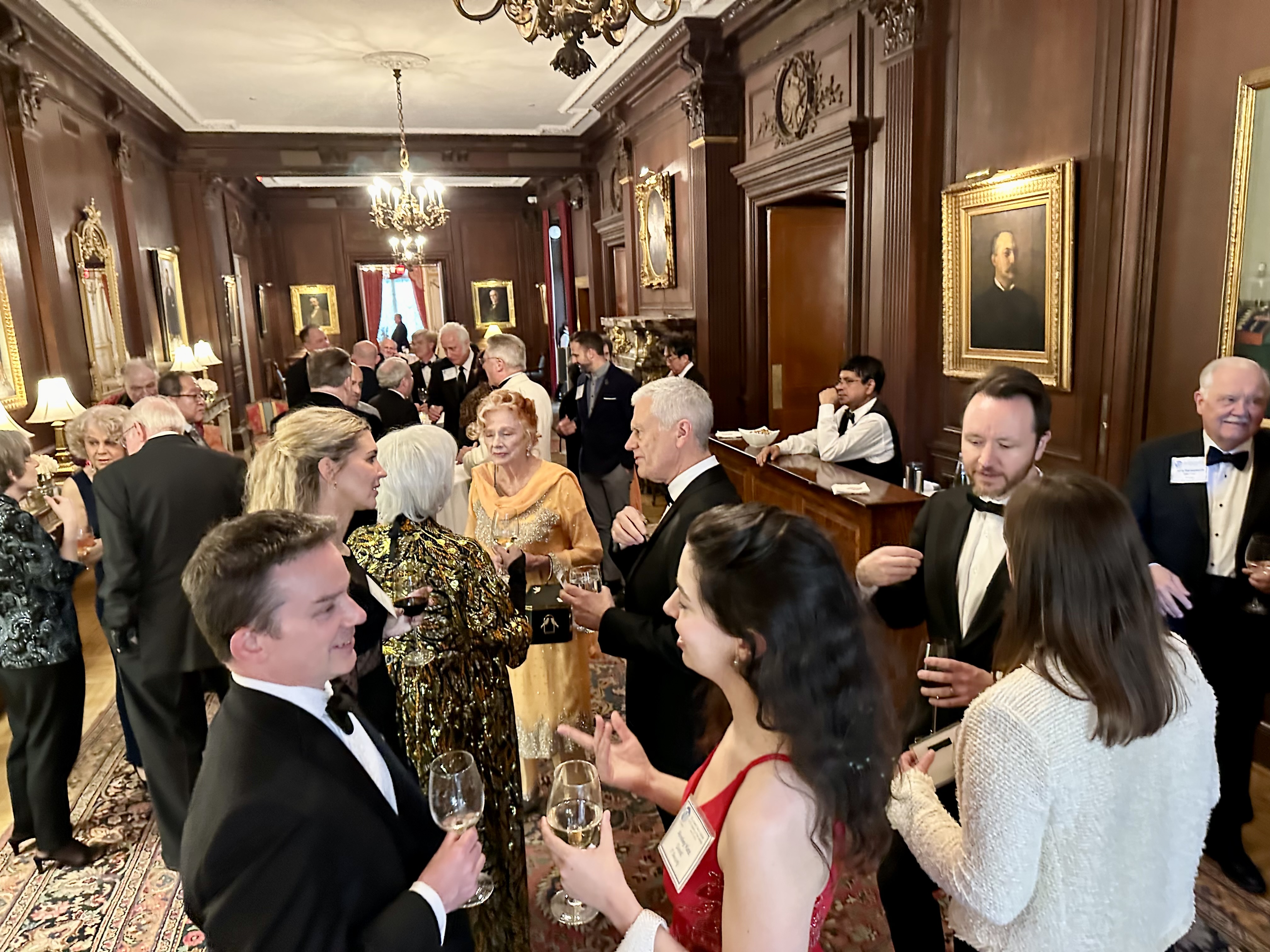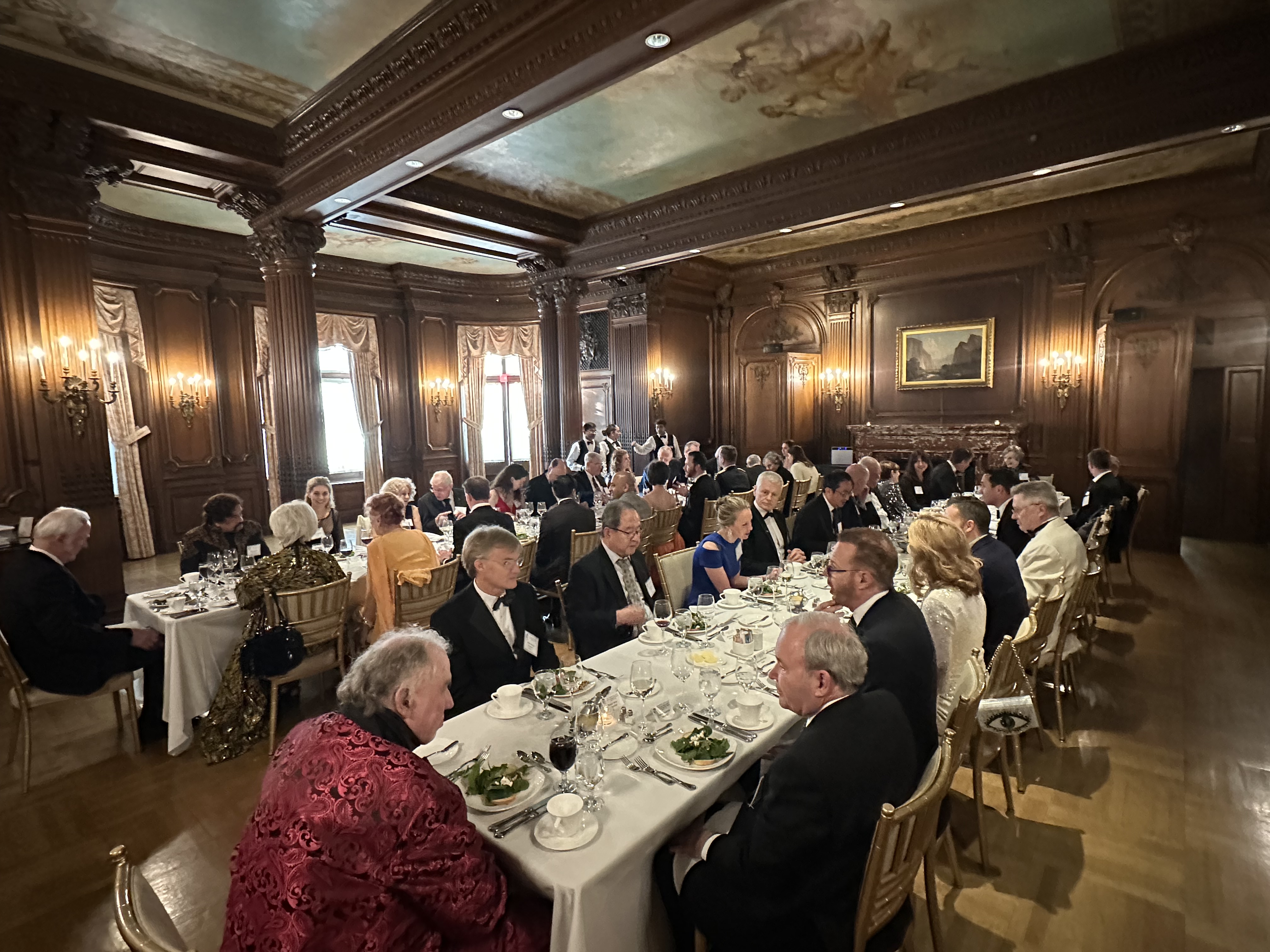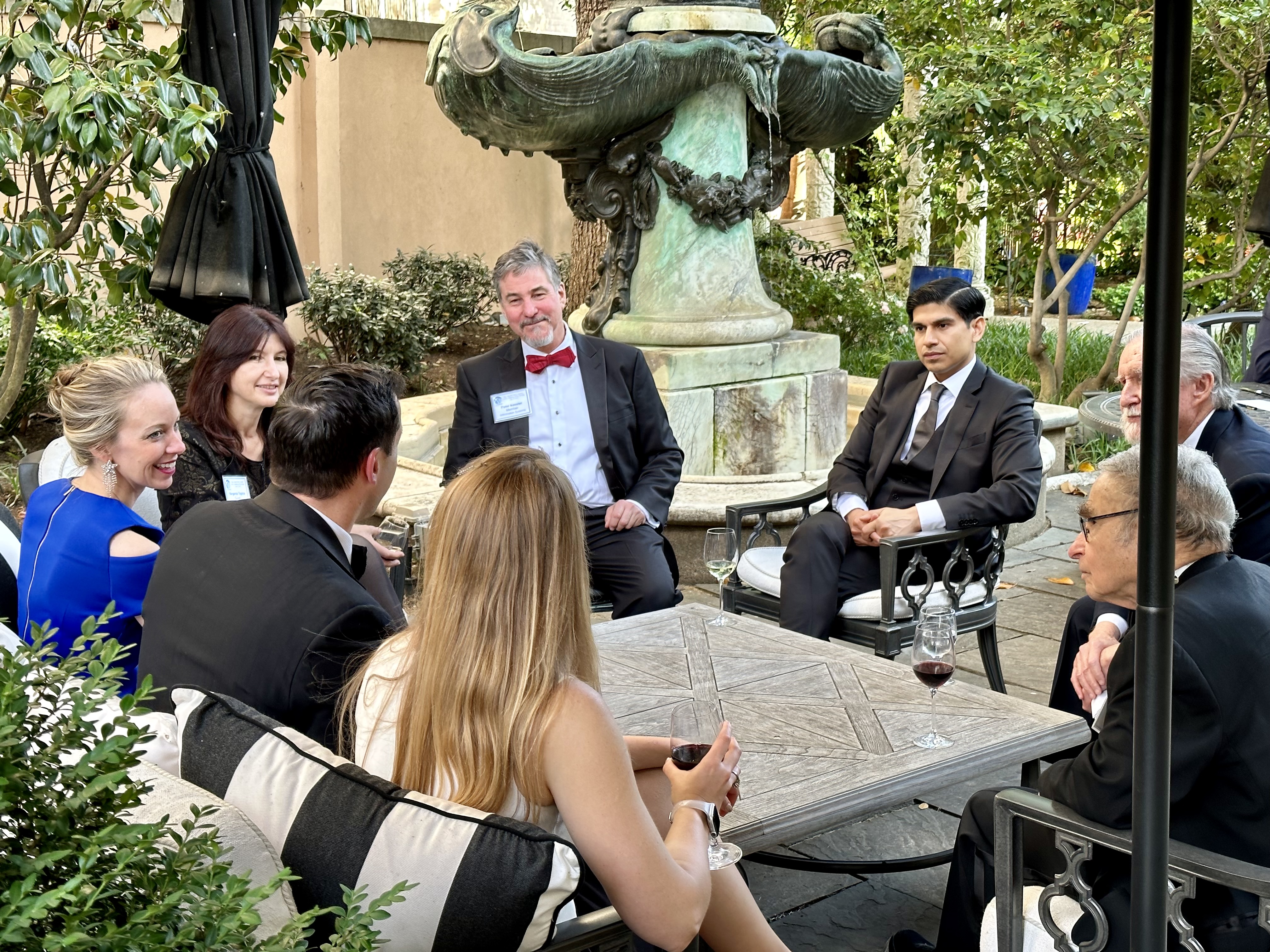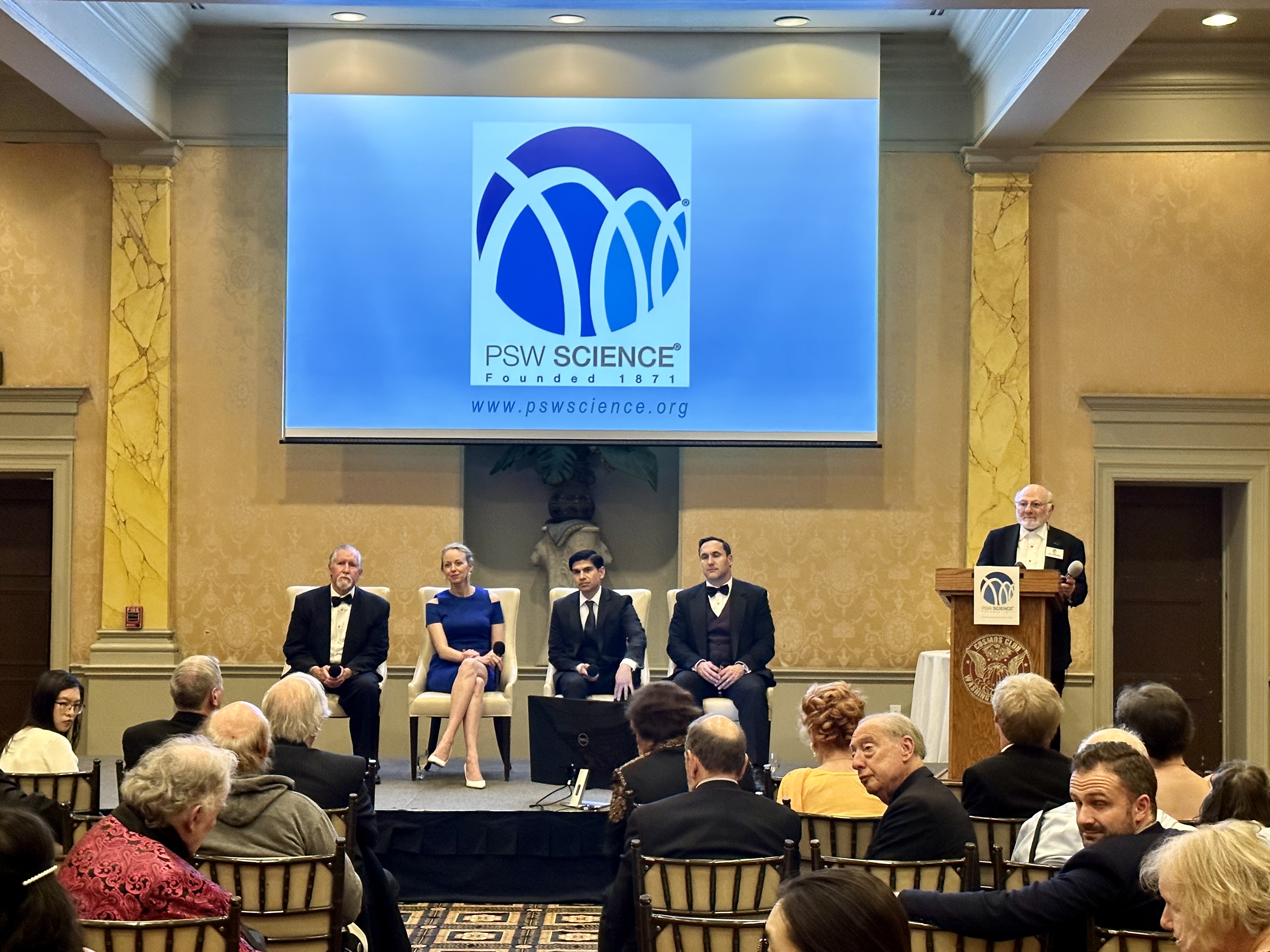The 92nd Joseph Henry Lecture
Architecture for the New Space Age
Learning to Work and Live Beyond Earth
Paul Kessler, Eleanor Morgan, Daniel Inocente, and Corky Clinton
Paul D. Kessler
Aerospace Technical Manager
NASA
Eleanor E. Morgan
Space Architect & Program Manager
Lockheed Martin
Daniel Inocente
Senior Space Architect
Blue Origin
Raymond "Corky" Clinton
Senior Technical Advisor, Science & Technology Office
NASA Marshall Space Flight Center
Sponsored by University of California San Diego
About the Lecture
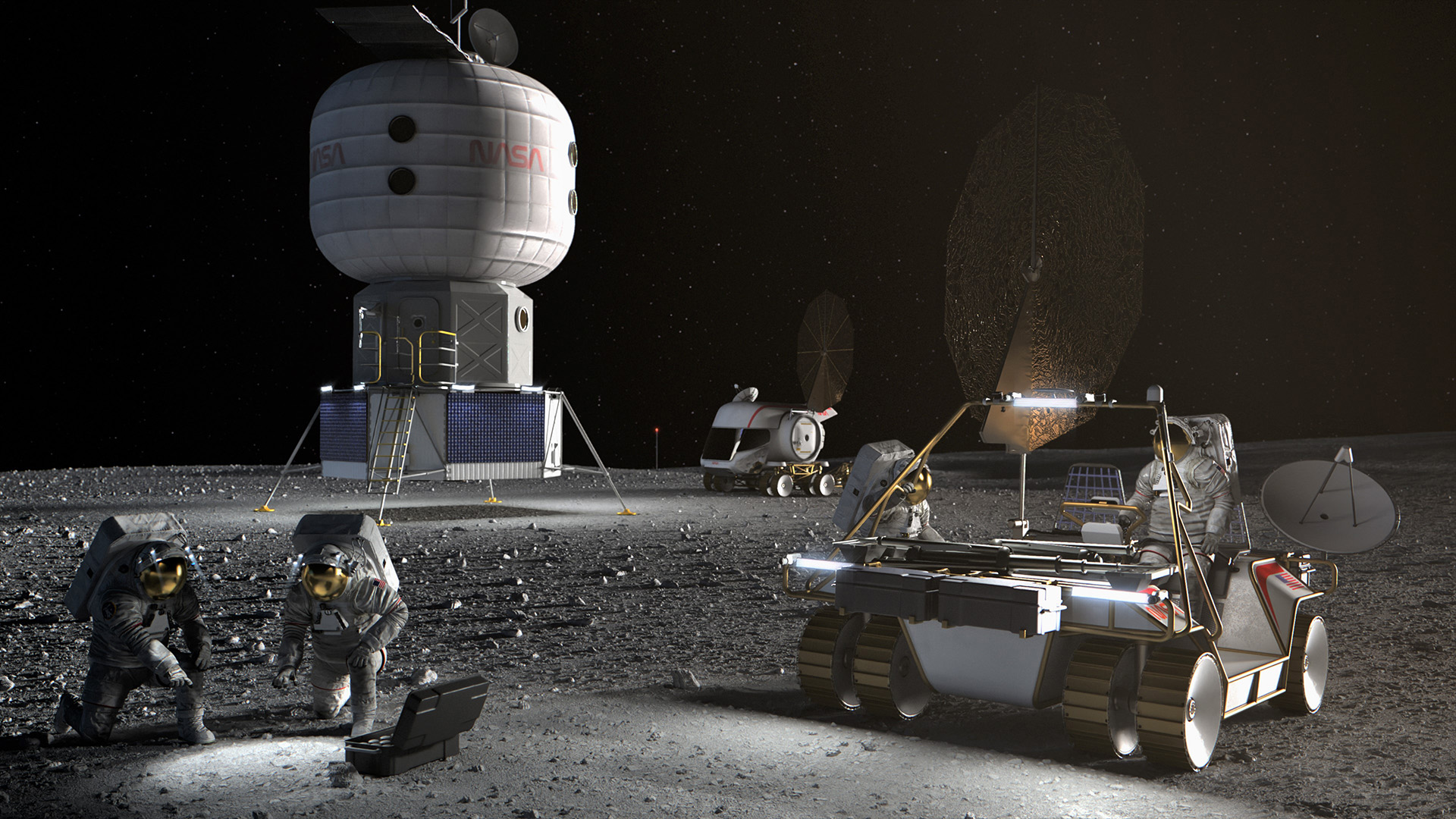
(1) A Home in Space: Future Space Habitat Development Efforts at NASA
Paul D. Kessler
Design Team Lead
Lunar Surface Habitat
Habitation Formulation Systems
Habitation Systems Development Office
NASA Marshall Space Flight Center
As NASA and its partners’ capabilities for human exploration of deep space continue to mature, so too does the roadmap toward a sustained crewed presence on the surface of the Moon and eventual human missions to Mars. The first launch of the Space Launch System and Orion crew vehicle, the contract award for the first demonstrations of a Human Landing System, and the beginning of construction on the initial elements of the lunar Gateway marked major milestones toward NASA’s near-term human exploration goals: a long-duration outpost in orbit around the Moon and the next footsteps on the lunar surface.
At the same time, NASA is in the early phases of planning the capabilities that will be needed for long-term exploration of the moon and Mars. Among the common elements that will be required by long-duration stays on the lunar surface, transit to Mars, and Martian surface expeditions will be new habitats unlike any flown to date. NASA is currently working on development of architectures for those habitats and on the technological advancements that will enable them, with an eye toward systems that will not only extend mission operations but also provide for living quarters that will keep the crew happy and healthy throughout their expeditions.
Beyond the Gateway habitation needs, these capabilities will need to be defined and advanced to support the initial lunar surface missions and to prepare for human missions to the Mars system. The Surface Habitat is the current concept in consideration to serve as this initial surface habitat that will extend the crew mission durations. It will provide 30-to-60-day habitability for a crew of up to four, allowing astronauts to explore farther and longer on each visit to the lunar sur-face. NASA is also currently reviewing opportunities to use current or near-term in-space habitation systems as proving grounds or precursors for keeping astronauts safe and healthy during future transits to Mars. Already, the International Space Station (ISS) is being used for implementation of next-generation life support systems that will inform those used in exploration habitats, and the operations approach for ISS is providing lessons-learned for future science operations around or on the Moon.
While a suite of habitation concepts is currently under study within NASA, the agency is also working closely with US industry through the Next Space Technologies for Exploration Partnerships (NextSTEP) to understand their concepts for commercially provided habitation capabilities as well as close coordination with international partners to understand their desires for in-space and surface habitation.
This presentation will provide a status of these concepts and partnership activities as well as potential future technology and architecture development paths.
Selected Reading & Media References
Kessler, T. Prater, T. Nickens and D. Harris, “Artemis Deep Space Habitation: Enabling a Sustained Human Presence on the Moon and Beyond,” 2022 IEEE Aerospace Conference (AERO), Big Sky, MT, USA, 2022, pp. 01-12, doi: 10.1109/AERO53065.2022.9843393.
(2) Architectures for Crewed Deep Space Missions: Taking Humans to the Moon, Mars and Beyond
Eleanor E. Morgan
Program Manager & Space Habitation Architecture Lead
Lockheed Martin Space
Recent advancements in space transportation systems and successful completion of NASA’s Artemis I mission have ushered in a new era of human spaceflight, enabling humans to once again travel beyond low-earth orbit. The burgeoning new age of crewed space exploration will entail new technologies and support systems that will need to be developed to sustain humans for longer periods of time in deep space in order to eventually achieve the goal of landing on Mars.
This talk will discuss mission architectures for future orbital, surface, and transport spacecraft that Lockheed Martin is working on in partnership with industry, academia, and government partners to enable future expeditions to the Moon and Mars.
Selected Reading & Media References
(a) Edwards, and T. Cichan, “Adaptable Artemis Architecture Concepts for Lunar and Mars Exploration Goals,” 2021 International Astronautical Congress (IAC), Dubai, United Arab Emirates, 2021.
(b) Summary info on Lockheed Martin’s Orion space capsule: https://www.lockheedmartin.com/en-us/products/orion.html
(c) Moon and Mars work that Lockheed Martin has done: https://www.lockheedmartin.com/en-us/capabilities/space/human-exploration.html
(d) Lockheed Martin Mars Base Camp Concept: https://www.lockheedmartin.com/en-us/products/mars-base-camp.html
(e) Background on NASA’s Moon to Mars plans and architecture: https://www.nasa.gov/MoonToMarsArchitecture
(3) Human Centered Space Architecture: Possibilities for Working and Living on Other Worlds
Daniel Inocente
Space Architect
Blue Origin
Establishing a sustained human presence on the moon and elsewhere in the solar system is a challenging undertaking that requires a complex infrastructure and capabilities to support human and robotic activities. For example, for a sustained lunar base this infrastructure includes various class 1, 2, and 3 type architectures that are highly dependent on pre-integrated systems as well as robotic construction equipment, among other critical technologies. A fundamental and enabling element is a habitat architecture that provides the foundation for these activities and allows work that enables future surface exploration and resource development. A critical challenge for a habitat of significant scale is the landed mass limitations, which need to be overcome to increase habitat functionality.
This lecture will focus on the challenges of designing, engineering, and building the habitat architecture needed for a permanent presence on the moon and elsewhere in the solar system, which can be achieved by producing lightweight, multi-purpose, structurally innovative, and highly integrated solutions. A high level of integration is necessary to support mission critical functions and to provide facilities where flexible commercial, research, scientific, and industrial activities can take place. This level of habitat integration is an enabling aspect sustainable long-term lunar system ecosystem.
A human-centered design approach is an essential part of the architectural process to design, engineer, and build this type of permanent habitat capability, The influence of environmental variables such as anthropometry, lighting, temperature, human-machine interactions, comfort, and health directly impact how occupants will inhabit and utilize habitats. These are among the key considerations necessary to develop a habitat architecture with a human-centered focus, extending mission durations, and enhancing human-systems integration.
The result of this human-centered design approach is another level of hybridization and multi-functionality, offering advantages over temporary, limited, or single-purpose solutions. These habitat architectures leverage systems and technologies for their unique characteristics but also offer adaptability for future activities. Other considerations include functions such as environmental protection systems, structures, multi-purpose racks, crew quarters, workstations, and interfaces.
This lecture will discuss new ideas for lunar habitat architecture that can enable the much larger ecosystem needed to build the foundation for future exploration and resource development on the moon and elsewhere.
Selected Reading & Media References
(a) Space Architecture for a Moon Village: https://pswscience.org/meeting/2412/
(b) Daniel’s website with many publications and links: https://danielinocente.com/project/moon-village/
(c) https://esamultimedia.esa.int/docs/cdf/Moon_Village_v1.1_Public.pdf
(d) https://www.dezeen.com/2021/07/07/moon-village-human-centric-inflatable-habitat-the-moon/
(4) On-Demand Infrastructure for the Moon, Mars, and Other Worlds: Make It — Don’t Take It
Raymond “Corky” Clinton, Jr.
Senior Technical Advisor
Science & Technology Office
NASA Marshall Space Flight Center
NASA plans to land astronauts on the Moon by 2025 through the initial Artemis missions. NASA and its international partners plan to establish a sustainable long-term presence on the lunar surface per the blueprint outlined in NASA’s Moon to Mars Strategy and Objectives Development document. The Space Technology Mission Directorate (STMD) aims to spur the creation of novel technologies needed for lunar surface exploration and accelerate the technology readiness of key systems and components. The STMD primary technology thrust areas are categorized as Go, Land, Live, and Explore the Moon. Technologies in the Live thrust area are captured under the Lunar Surface Innovation Initiative (LSII) and include sustainable power; dust mitigation; in-situ resource utilization; surface excavation, construction, and outfitting; and extreme access/extreme environments.
Living and working on the Moon, establishing a sustainable human presence, requires infrastructure including the technologies highlighted under the LSII. Making maximum use of in situ resources and living off the land is envisioned to reduce the dependency on Earth-supplied consumables, materials, and hardware that would otherwise be required to be launched from Earth for deep space exploration.
This lecture will focus on development of capabilities enabling on-demand construction of lunar infrastructure. A brief overview of NASA’s Moon to Mars Planetary Autonomous Construction Technology (MMPACT) project will include plans for testing of the various candidate lunar construction materials, preliminary design concepts for future lunar infrastructure elements, and the vision for future extraterrestrial technology demonstrations.
Selected Reading & Media References
(a) NASA’s Moon to Mars Strategy and Objectives Development. Document is available online at: https://go.nasa.gov/3zzSNhp
(b) Clinton et al. “NASA’s Moon-to-Mars Planetary Autonomous Construction Technology Project: Overview and Status.” Presented at the International Astronautical Congress, Paris, France, September 18-22, 2022.
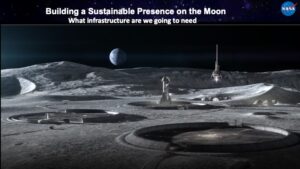
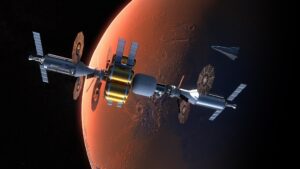
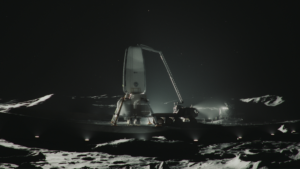
About the Speaker

Paul Kessler has had long career in space operations, performing systems analyses, concept design, and independent assessments for the DOD and for NASA’s Science Mission and Human Spaceflight Directorates. Currently, he is lead architect for the Lunar Surface Habitat at NASA’s Marshall Space Flight Center. Previously he worked with the Space Mission Analysis Branch at NASA Langley. Before that he served as a lead flight systems analyst for Explorer class evaluations for NASA’s Science Mission Directorate. He was a lead analyst for the Committee on Earth Observation Satellites, assisting international agencies and organizations to obtain satellite Earth observation data for use in areas such as deforestation, water availability, and crop monitoring. In addition, Paul worked with NextSTEP partners for habitation, especially as the lead technical liaison for NASA and liaison for Bigelow Aerospace.
Paul has written several papers on habitation for technical conferences including “Artemis Deep Space Habitation: Enabling a Sustained Human Presence on the Moon and Beyond”. He has also appeared as a guest on Houston We Have a Podcast Episode 273 on the Deep Space Transport.
He earned a BS in Biology and an MS in Aerospace Engineering at the University of Colorado.
Eleanor Morgan is a Program Manager and Habitation Architecture Lead for Lockheed Martin’s space habitation development programs. She oversees the technical and mission architecture development for orbital, surface, and transport spacecraft for low earth orbit and future expeditions to the Moon and Mars. Eleanor also serves as a member and technical session chair for the International Astronautical Federation’s Human Spaceflight committee. And she is a Major in the United States Air Force Reserve.
Previously, Eleanor led Lockheed’s joint partnership projects with Nanoracks and General Motors for the development of the next-generation commercial space station and lunar rover. Before joining Lockheed, she led systems engineering and crew systems development for inflatable space habitats at Bigelow Aerospace, and conducted human spaceflight research at NASA’s Johnson Space Center. Prior to her space career, she was an active-duty combat aviator in the Air Force for 12 years.
Among other honors and awards, Eleanor is the recipient of two national awards for her contributions to military aviation, human space exploration, and her extensive youth and female STEM outreach and mentorship activities.
Eleanor earned a BS in Systems Engineering at the US Air Force Academy, and an MS in Space Studies at the American Military University. Currently she is an Executive MBA candidate at the MIT Sloan School of Management.
Daniel Inocente is an Architect and Space Architect. He is also a Senior Space Architect at Blue Origin and an Adjunct Professor of Architecture at Arizona State University. His experience includes working for architecture and engineering firms on a broad range of international building projects. Prior engagements include work with SOM, Gehry Partners, HKS, Gehry Technologies, and NASA.
He has an extensive background in designing and developing architectural projects across multiple sectors, including commercial, transportation, aviation, government, culture, science, education, and residential. Some of his experience includes working on the Guggenheim Museum – Abu Dhabi, the Battersea Development in London, Tour Charenton in Paris, Jiuzhou Bay Zhuhai Tower, Wangchao Center, and the Guiyang World Trade Center. Daniel has established and managed space architecture partnerships with ESA, MIT, Lockheed, the University of Manchester, and others. His unique skill set in both architecture and space architecture enables him to bring together diverse teams and foster cross-sector collaboration. Daniel earned a Bachelor of Architecture at the Southern California Institute of Architecture.
Raymond “Corky” Clinton, Jr. is the Principal Investigator for the Moon-to-Mars Planetary Autonomous Construction Technology (MMPACT) project and Senior Technical Advisor for the Science and Technology Office at NASA’s Marshall Space Flight Center (MSFC) in Huntsville, AL The office conducts advanced research at the intersection of science and exploration and is responsible for integrating early stage research and game-changing technology development activities at Marshall. Current focuses at Marshall include additive manufacturing (3-D printing) in space and in situ resource utilization for human exploration of the moon, Mars and other worlds.
Previously Corky served in a variety of roles at NASA including acting manager of NASA’s Lunar Program & Projects Office at Marshall and managing robotic missions to the moon to lay the groundwork for sustained human exploration of the solar system. Among other notable postings, he led NASA’s investigation into thermal protection system foam loss during liftoff of the space shuttle Discovery.
Corky has long championed the development of in space manufacturing and additive construction for extraterrestrial infrastructure, starting with MSFC’s first 3D printing reduced gravity flight experiment in 1999. He has worked extensively on materials research, technology development and hardware design and fabrication for space exploration. He has published numerous papers and technical reports relating to his work . And, among other honors and awards, he is the recipient of the Presidential Rank Award for outstanding achievement at NASA, the NASA Silver Snoopy Award, the NASA Exceptional Achievement Medal, the Distinguished Engineering Achievement Award of the Engineers Counsel, and the NASA Outstanding Leadership Medal.
Corky earned a BS, MS and PhD at Georgia Institute of Technology.
Minutes
On March 19, 2023, from the Powell Auditorium of the Cosmos Club in Washington, D.C, and by Zoom webinar broadcast on the PSW Science YouTube channel, President Larry Millstein called the 2,477th meeting of the Society to order at 8:03 p.m. ET. He welcomed new members, and the minutes of the previous meeting were read on behalf of the recording secretary.
President Millstein then introduced the four speakers for the evening, Paul D. Kessler, Aerospace Technical Manager at NASA, Eleanor E. Morgan, Space Architect & Program Manager at Lockheed Martin, Daniel Inocente, Senior Space Architect at Blue Origin, and Raymond "Corky" Clinton, Senior Technical Advisor, Science & Technology Office at NASA Marshall Space Flight Center. President Millstein noted that the opinions expressed in these lectures are not the official opinions of NASA or Lockheed or any other organization that may seem to be seen somehow associated with the speakers. The lecture for the evening was titled, “Architecture for the New Space Age.”
Kessler began thanking the society for the invitation to speak. Kessler first discussed what the vision of NASA is with respect to the exploration of space by humans. He contextualized this reviewing NASA’s overall strategy to pave the way to this human exploration. Next Kessler reviewed a variety of habitation considerations and challenges. The space environment, he explained, present a variety of for long-term habitation in space including dust contamination, radiation, and the capability to maintain and repair systems. Kessler concluded his portion of the lecture by emphasizing the reliance of collaboration, and noted that it is the key to success.
Next, Morgan took the stage and began by thanking the audience and PSW Science. Morgan reviewed the technology development that Lockheed Martin is working on to set the foundation for going to Mars. The technologies, she explained, have very long lead times. Lockheed Martin intends to use the moon as a testing ground for the technology intended to bring humans to the red planet. She went on to review their ongoing efforts in low earth orbit that are along the development path to assist with in space transportation of crew. Morgan commented that Artemis 3 mission will be the first mission to bring humans back to the lunar surface. Morgan went on to discuss transportation technologies and difficulties, and solutions for habitats that Lockheed Martin is working. She showed a video of a stress test on their current inflatable habitat module, which, she emphasizes, is more rugged than a metallic structure and very much not like a bouncy house. Morgan went on to discuss habitats, her experience as a stimulated astronaut and other efforts Lockheed Martin is pursuing. She concluded by reviewing concepts for potential architecture for a Mars transit vehicle.
Inocente, an architect and space architect, began by discussing the concept of space architecture, which involves designing and building structures for human habitation in space. He mentioned the historical development of space architecture, the importance of considering factors like environment, habitability, and health in space, and the integration of various systems and technologies. The speaker went on to highlight specific projects and technologies being explored, such as the orbital reef and carbon fiber structures, and concluded by discussing the challenges and opportunities of surface architecture on celestial bodies like the Moon.
The fourth speaker for the evening, Clinton, began with a monthly python joke, at which the audience laughed. He then briefly reviewed the history of in-space manufacturing and extraterrestrial construction at Marshall Space Flight Center. The speaker then reviewed the objectives of the Moon to Mars exploration strategy, emphasizing the need for advanced manufacturing, autonomous construction capabilities, a continuous human lunar presence, and a robust lunar economy. Next, the speaker outlined the phased approach to lunar construction, starting with the development of planar structures like landing pads and roads, followed by more complex vertical structures and the eventual establishment of a lunar settlement with full construction capability. Clinton concluded by emphasizing the important role of partners in this ambitious endeavor.
Next the question and answer period began. One member asked whether there was consideration of placing a habitat into the lava tubes on the lunar surface to protect from radiation. Kessler responded that there is indeed consideration for this and placing habitats under a meter of regolith, however, for the initial development stages the habitats will likely be lunar surface bound. Clinton highlighted the pockets available for deposits of lunar regolith to protect from radiation. A Swedish viewer streaming the lecture asked about the in-situ fuel resources. Clinton responded that liquid oxygen and liquid hydrogen could be produced from water found on the lunar surface.
After the question and answer period, President Millstein thanked the speaker, made the usual housekeeping announcements, and invited guests to join the Society. President Millstein adjourned the meeting at 10:20 p.m.
Temperature in Washington, D.C.: 5° C
Weather: Partly Cloudy
Attendance: Attending in the Powell Auditorium: 90, Attending live via YouTube: 34, for a total in person attendance of 124, and the number of online viewers in the first two weeks of posting was 395.
Respectfully submitted,
Cameo Lance, Recording Secretary
Highlights

